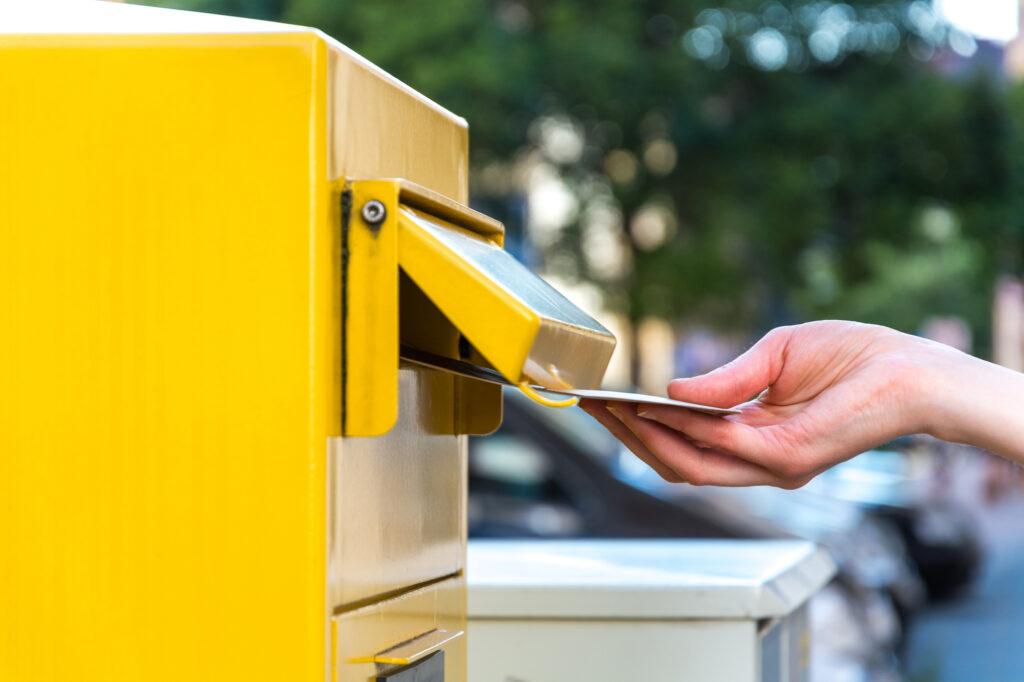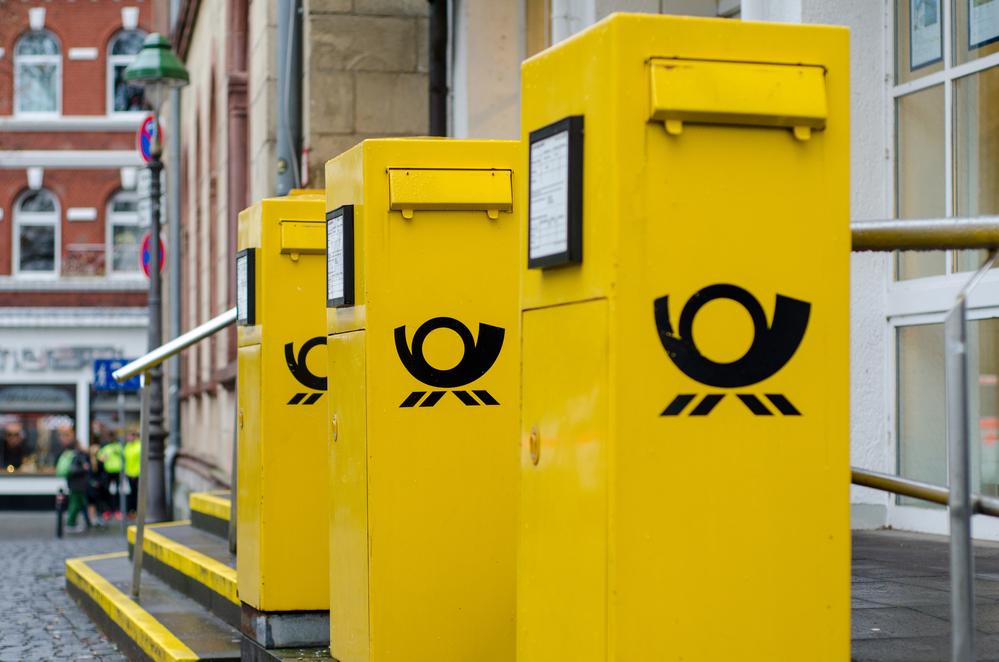
Disclosure: This blog post may contain affiliate links. If you decide to make a purchase through one of these links, we receive a commission from the sale at no additional cost to you. As an Amazon Associate, Travel and Blossom also earns from qualifying purchases. For more information, please read our Disclosure Policy.

Need to mail a letter in Germany but don’t know how to format the address? Check out this post to learn more about the German address format.
As someone who has spent some time abroad, mailing things in another foreign country is another hassle of itself. For example, when I was a study abroad student in Italy, I didn’t realize that the address format in Italy was quite different from the U.S.. For example, instead of putting the house number before the street name, Italians put it after the street. In addition, instead of putting the zip-code at the end of the address, Italians put it before the city.
Therefore, if you’re an American planning to send mail to/in Germany, you’ve come to the right place. This post highlights all the different parts you need to know about how to format a German address as well as where to mail it.
Table of Contents
Before you format an address on any envelope you’re sending to Germany, it’s important to familiarize yourself with the parts of the German address that make it complete.
Similar to the U.S., addresses in Germany start with the recipient’s name or the business name as the first line.
Unlike the U.S., addresses in Germany have the street name before the house number on the second line.
Apartment numbers are basically nonexistent in Germany so you won’t see them on a German address. Therefore, it’s very important to have the recipient’s name on the envelope.
Similar to the U.S., German addresses also use a postal code in its formatting. If you’re unsure of which postal code to use when you address your envelope, you can use a locator.
Similar to the U.S., addresses in Germany also have the city on the envelope.
Last but not least, German addresses also add the country of the recipient. This however, is not common in the U.S.
Street abbreviations in Germany are also something you should keep in mind as you are formatting a German address. Similar to the U.S., Germany also has a way of abbreviating different kinds of street names.
For example, any street ending in straße in Germany may also be written as str.
Oderbergerstrasse – Oderbergerstr
In addition, any street ending in platz in Germany may also be written as pl.
Alexanderplatz – Alexanderpl
Lastly, any street ending in weg in Germany may also be written as w.
Glockenweg – Glockenw
Now that you have the bits and pieces that make up a German address, it’s now time to go over how to format it. In fact, a German address can be formatted in many different ways depending on the recipient.
If you wanted to address something to your friend in Germany, please use the following format:
Steffi Schneider (the recipient)
Oderbergerstraße 17 (street and house number)
12345 Berlin (zip code and city)
Deutschland (country)
If you wanted to address something to someone who’s name isn’t on the mailbox, please use the following format:
Steffi Schneider (the recipient) bei [Tenant’s Name or Homeowner’s name]
Oderbergerstraße 17 (street and house number)
12345 Berlin (zip code and city)
Deutschland (country)
Adding bei [Tenant’s Name or Homeowner’s name] to the address signifies to the German Post Office that even though the recipient’s name isn’t on the mailbox, they can leave the mail in the tenant’s mailbox or the homeowner’s.
If you want to address something to someone who has a P.O. Box in Germany, please use the following format:
Steffi Schneider (the recipient)
Postfach 170 (P.O. Box and number)
D-12345 Berlin (country abbreviated-zip code and city)
*As another tip, instead of writing Deutschland for the country, you can simply hyphenate the letter D in front of the German zip code.
If you want to address something to someone who is at a military base in Germany, please use the following format.
Steffi Schneider (the recipient)
PSC 5 Box 1 (product & service code and box number)
[APO] AE 12345-6789 (army/air force post office and zip code)
*”APO” is in a placeholder for this address format since it can be replaced with FPO (Fleet Post Office). In addition, “AE” must always be used as the state if it’s being mailed to Germany. Following these guidelines, overall, will ensure that your mail goes through the military postal system instead of the international mail channels.
If you want to address something to someone at a business or a company in Germany, please use the following format.
AuPairWorld GmbH (the business or company)
(z.H. Fr. Schneider)
Friedrich-Ebert-Str. 10 (street and house number)
D-12345 Kassel (country abbreviated-zip code and city)
The “z.H.” in this address format stands for “zu Händen von“ in German. It’s equivalant to the C/O in the U.S. or the “Attention:/ATTN:”.
In addition, the “Fr.” in this address format stands for “Frau” in German. This essentially means “woman” in English and it’s equivalent to Mrs., Ms., or Madam. Therefore, if you wanted to use the male equivalent, the “Fr.” in this address format should be replaced with “Hr.“(Herr) for “man” or Mr.
Lastly, it’s important to note that German street names that have two or more words in them are built with hyphens instead of spaces.
Furthermore, another thing that’s important to note if you live in an apartment in Germany is to make sure your landlord or property manager adds your name to your letterbox. Since most apartments in Germany don’t have an apartment number, your mail will not be delivered to you by the mailman if your name is not on the letterbox.
In addition, when it comes to sending letters and packages from Germany, doing it with the Deutsche Post is the best way to go. In fact, if finding a dedicated post office is very limiting for you, you’re welcome to send your mail through any shop, supermarket or kiosk that has the Deutsche Post logo.

Lastly, finding a postbox in Germany is easier than you think. These postboxes are placed at different intervals throughout the country and they are yellow with the Deutsche Post logo on the side.

In fact, if you look a little closer at the photo above, you’ll also see that the postboxes have information regarding pick-up times. In addition, local post is usually placed in the left hand slot of the postbox while international post is placed on the right.
Stamps are also something easy to come by if you purchase them through the Deutsche Post online shop.
Overall, to end this post, I thought it would be helpful to answer some frequently asked questions you might have about mailing stuff in Germany.
Yes! USPS provides reliable and affordable international delivery to about 180 countries which includes Germany.
USPS uses the Deutsche Post to deliver mail and parcels throughout Germany.
Yes! When a package first arrives in Germany, it must pass through customs clearance first, which involves a lot of taxes, tariffs, and fees called duties. The amount you pay is therefore based on the value of the package and its shipping cost.
In the end, I really hope you enjoyed reading about the German address format for mailing letters in Germany. Please let me know in the comments down below which fact about the German address format surprised you the most. I would love to hear from you!